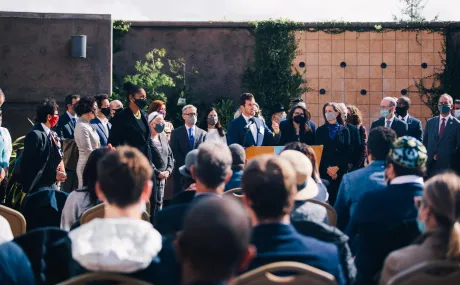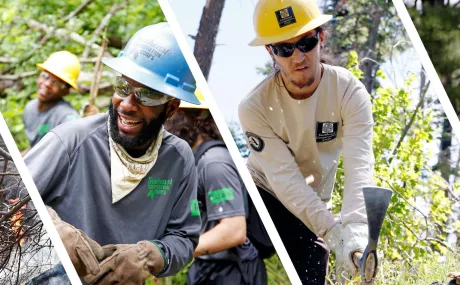Case study: Disaster relief nonprofit wins Force for Change Grant
In 2010, Airlink was founded to forge a partnership between commercial aviation and the nonprofit community. Airlink was created to fit a specific need: supply humanitarian and disaster relief nonprofits with the air support they need from commercial airlines at a low cost to both sides. Today, the Washington DC based nonprofit has developed a vibrant network of over 35 commercial/charter airlines and 60 international nonprofits. This is their story, based on the presentation they gave at Dreamforce 2015.
Before: a tangled web of communications
Before Airlink stepped in to bridge the gap between nonprofits and airlines, those relationships were complicated and unpredictable, and having no central technology hub to manage them made it even more challenging. Due to the fact that the nonprofits were responding to urgent international crises, there was no time for them to plan out how to send cargo, volunteers, and other aid to areas of need. This led to airlines being inundated with requests for help without the staff to process them and without any process for deciding which nonprofit they could help and how. Under such intense pressure, airlines made ad-hoc decisions and nonprofits were often priced out of providing aid.
In addition, in their early days, Airlink was tracking information in categorized spreadsheets, did not have a centralized place for tracking communication, and thus had a very hard time fulfilling and reporting on their impact. Something had to change.
After: a centralized response platform powered by Salesforce
Airlink wanted to improve processes and communication between nonprofits and airlines, which required them to establish a sophisticated system for themselves. In 2014, Idealist Consulting helped Airlink apply for a Force for Change Grant from Salesforce.org to develop a real-time disaster response application that would allow them to quickly and effectively match sudden needs with discounted or donated airline support.
After winning the grant, Idealist Consulting worked with Airlink to build out their instance of Salesforce with a number of solution partners (many of whom generously donated their technology) and built out custom integrations to achieve a number of outcomes:
Simplified path to engagement: Salesforce Experience Cloud facilitates faster communication between nonprofits and Airlink by enabling nonprofits them to fill out a mission request and track their status
Improved flight matching: when a disaster strikes, the platform uses Flight Stats and GPS technology to associate airports and flights to an event, select passengers, and associate routes with nonprofit mission requests
Just-in-time mission event management: through Conga, Airlink can create mission and event communications
Report on mission success: after the mission, the nonprofit fills out a report through Experience Cloud, which is pushed to Airlink’s website
So how does this look from top to bottom? By facilitating requests for air capacity, cargo space and passenger seats, airlines help nonprofits at a low cost and without wasting time in communication. Airlines also know who they’re helping because Airlink provides nonprofit partner vetting and matches mission needs to airline capacity. Airlink also tracks and manages communication throughout the entire exchange, measures impact, and facilitates mission reporting so that airlines can market and promote what they’ve donated and nonprofits can report back on their service.
















